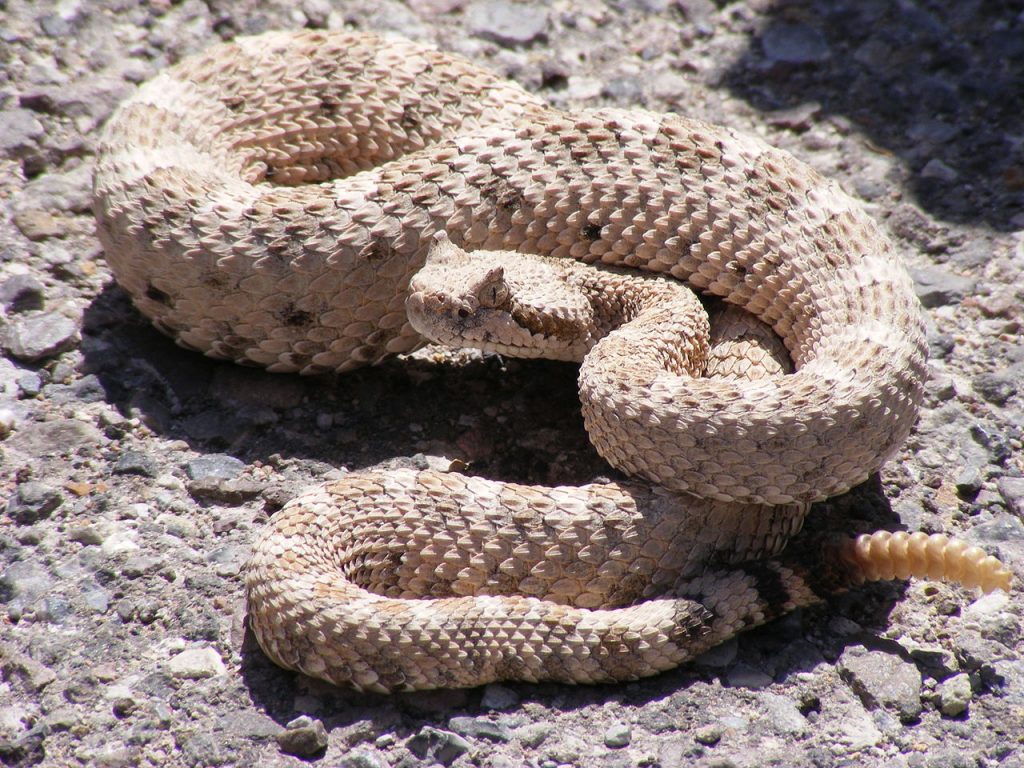Watch out for snakes, spiders and fire ants: Rising temperatures are opening up new ground to venomous creatures, including your own backyard.

By 2050, rising temperatures will be the fastest growing threat to biodiversity in the Americas, and by 2100 it could have wiped out more than half of African bird and mammal species. From sea turtles to polar bears to pikas, many of our most charismatic species are in jeopardy. But there’s always winners and losers, and it seems that some of the organisms that are doing well and may do well into the future are the venomous species.
Many venomous animals that live on land will migrate north or south in coming decades, away from tropical areas and into places that are more densely inhabited by people. On the whole, they will cross our paths more frequently in future. What’s more, many of these species are already on the move.
It looks like for a lot of species in the U.S. it’s a range expansion, so we’re going to see them in places we’re not expecting them or they haven’t been found in the past. There’s not going to be an explosion of venomous spiders or anything crazy like that.
The coming invasions on Earth
Some of the arthropods, spiders, and snakes benefit from a little warming. Venomous animals tend to be cold-blooded; their wellbeing is dictated by the temperature of their surroundings. So when their preferred conditions shift north or south, these animals will follow and the venomous creatures will just change their geographic location.
One of the forecasts is that venomous snakes will push farther into the northern United States and Canada and southward in Argentina and even Chile by 2050. This will put an additional 5.5 to 6.7 million people at risk for snakebites. Extreme weather events may also lead to an increase in bites. In the United States, copperheads – fortunately, their venom is not particularly potent – could be especially troublesome as they encroach more on human residential areas, whereas other snakes would really back off. Rattlesnakes, will likely migrate northward as well.
Fire ants, currently found in much of the South and California, will also continue to march farther north. According to one prediction, their suitable habitat in the United States will grow by 21 percent by the end of the century.
Meanwhile, Africanized bees will penetrate deeper into the central United States and California.
Finally, spiders are also shifting farther north and will take advantage of central heating to survive the harsh winters indoors. Human encounters in areas such as the Midwest are already on the rise.
The coming invasions in the Oceans
In Australia, box jellyfish are appearing earlier in the season and sticking around longer and in more southerly beaches. In future, their numbers will likely grow and cause more shutdowns of beaches and resorts. Other jellyfish are booming in the waters around Italy. The crown-of-thorns starfish, which is bristling with venomous spines, will likely also swell its ranks.
The sea snake population may not increase, but these marine reptiles are likely to move to new areas. Yellow-bellied sea snakes occasionally wash up on the shores of California and may do so more in future, while sea kraits are heading for South Korea.
Lionfish, which have been invading the Caribbean and Florida for decades, will also colonize new waters. They’ve been spotted as far north as New York, but the winters are too cold to allow them to thrive year-round. Even though there’s the potential for them to expand their range at least seasonally, they’re kind of cut off. It may be controlled a little bit naturally.
Cataclysm for orther species
In certain regions of the world the suitable environmental conditions for many venomous species will be reduced or disappear completely. Marine animals will also have to cope with ocean acidification. Many jellyfish may in fact be hardy enough to handle warming and more acidic waters. As coral reefs blanch, they’re actually going to do quite well.
Certain poisonous animals – which secrete toxins instead of injecting them – are in for a struggle, too. Like other amphibians, poison dart frogs are already under threat from habitat loss, deadly fungi, and changing weather patterns. Even a little warming could lead to drier conditions that the frogs won’t be able to tolerate. Once you start messing with the moisture content they really lose out because their skin is so permeable and dries so quickly.
Be prepared
Even if climate change makes an area more appealing for venomous animals, it doesn’t guarantee that they will move in. So it’s hard to say exactly when or where venomous animals will show up. When they do arrive in a new area, though, some of us might be caught unaware. People may not know to steer clear of fire ant mounds, or not to approach lionfish they spot while swimming, because they’re used to more benign native species. “More people are encountering those and not knowing that you shouldn’t touch the spines, whereas if you grew up knowing this fish you would leave it alone,” Erickson says.
Going forward, healthcare providers will need to know how to treat bites and stings caused by invasive venomous animals. Finding ways to make antivenoms cheaper will also be key. Scientists are working on antivenoms that have a longer shelf life or can combat venom from a number of species rather than just one.
“It’s important to think about having the proper antivenom in the right place and training people to be prepared for encountering species they are not used to,” Neylan says. “Just being aware and paying attention to the environment around you is going to be more and more important.”
The good news is that venomous animals don’t usually go after people. And with a little preparation, we should be able to coexist with our venomous new neighbors.











